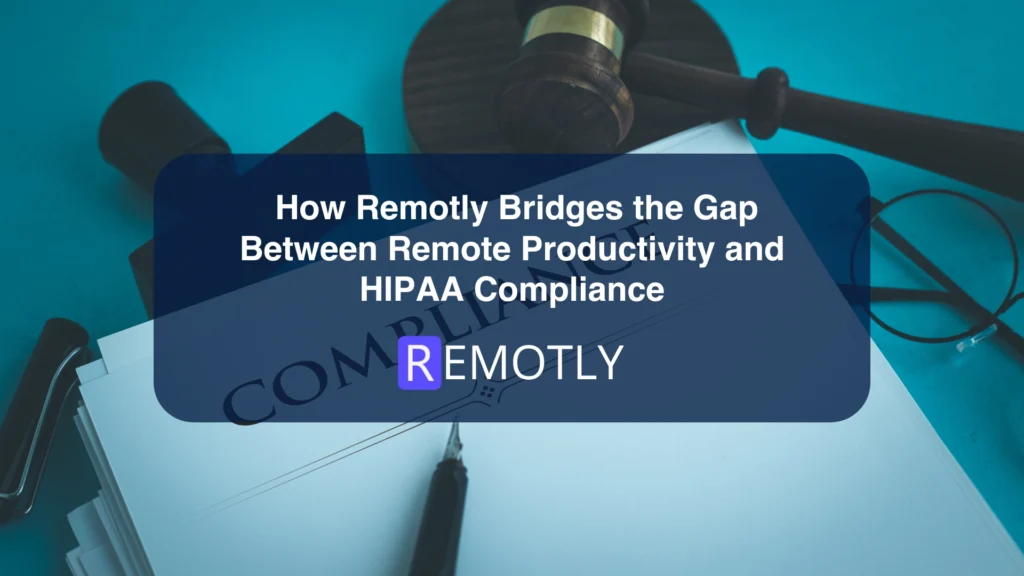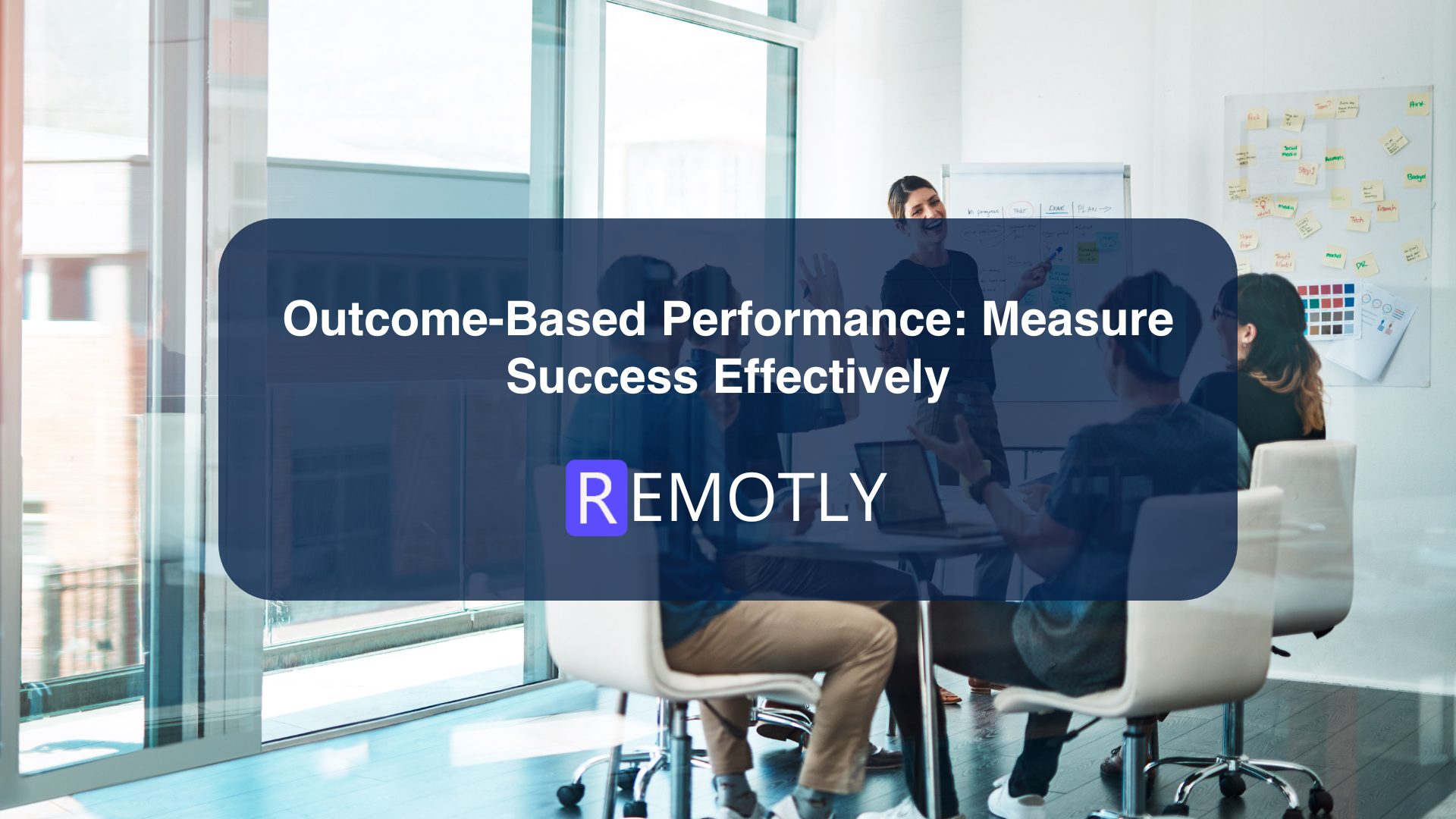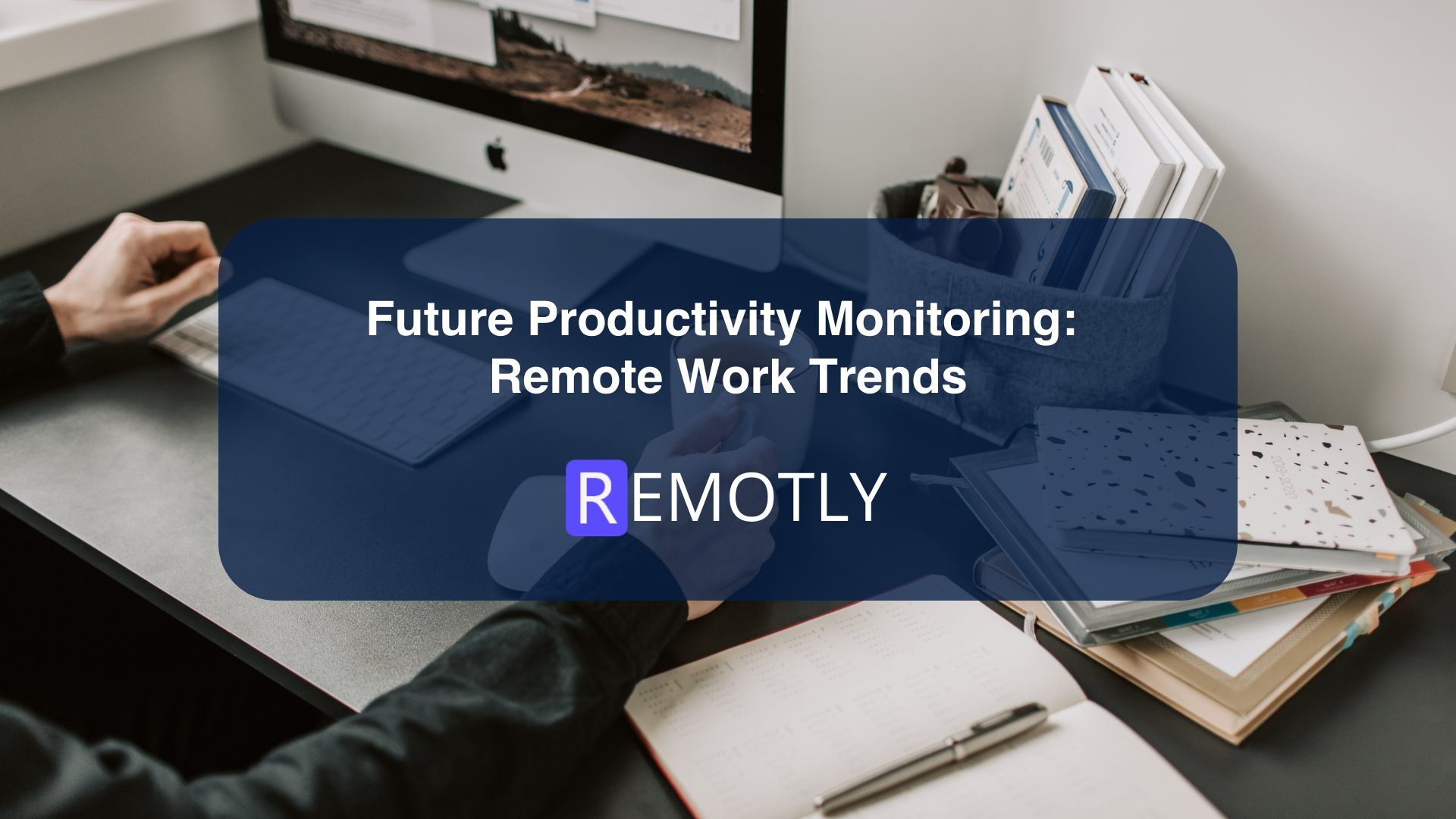Introduction: The Stakes of Remote Work in Healthcare
Remote and hybrid work models have become not just a convenience but a necessity across industries. In healthcare where sensitive patient data, regulatory oversight, and quality of service converge, the stakes are especially high. Productivity gains from remote setups cannot come at the cost of HIPAA compliance or broader remote healthcare compliance. A single breach or noncompliance event can cost millions, erode patient trust, and trigger regulatory action. The challenge, then, is: how can healthcare organizations, clinics, telehealth providers, and associated vendors ensure that remote teams remain highly efficient while never stepping over the line of HIPAA compliance?
REMOTLY positions itself as a solution to this tension. Rather than just a productivity tracker or a surveillance tool, REMOTLY promotes itself as an analytics + compliance platform designed to help organizations monitor remote work productivity, surface risks, and deliver audit-ready reporting all while maintaining productivity insight and operational flexibility. In this article, we will dissect exactly how REMOTLY accomplishes this balance, examine the technical and policy levers it employs, and show why it stands out compared with typical productivity tools.
Understanding REMOTLY: What It Does, and Why It Matters
Core Capabilities from REMOTLY.tech
By reviewing the features page, we can map out the capabilities that make REMOTLY more than a “time tracker.” REMOTLY offers a productivity dashboard that surfaces real-time insights into employee engagement, application and website usage, and idle/active periods. It also provides device & network insights metrics around hardware usage, network performance, CPU, RAM, storage, etc.
REMOTLY supports multi-OS environments (Windows, Mac) to ensure broad compatibility. It has multi-tenancy and role-based security, meaning one instance can serve multiple teams or branches, with differentiated access control.
A particularly useful feature is productivity classification: administrators can categorize applications and URLs into custom productivity groupings to flag distractions or inefficiencies. It also offers historical data, stretching from 30 days up to 12 months, which supports trend analysis and audit readiness.
REMOTLY includes support for SSO (single sign-on) and Active Directory integration, helping with identity management and reducing friction. Furthermore, it provides daily summary reports, shift scheduling views, and a burnout dashboard (comparing scheduled vs. actual work hours) to monitor workload balance.
All these add up to a platform designed for oversight, insight, and controlled productivity key ingredients for integrating into a HIPAA-aware remote environment.
Why These Features Matter for Compliance
Productivity dashboards, device metrics, historical logs, and role-based access are not just “nice to have” they form the backbone of compliance practices. In HIPAA compliance for remote teams, one must prove that only authorized users accessed sensitive systems, that anomalies are detected, and that all activity is traceable. Without such instrumentation, organizations risk blind spots.
Let me illustrate the difference: a generic productivity tracker might tell you “User A used Excel for 3 hours.” But REMOTLY can give context: Which file(s) did they open? Did they access network drives containing PHI? Did they attempt to copy data to unauthorized destinations? Did the device’s CPU or memory spike suspiciously? Did this user deviate from scheduled shift windows?
Those extra layers of insight are essential for audit trails and risk mitigation.
The Core Challenges of Remote HIPAA Compliance and How REMOTLY Helps Solve Them
To appreciate REMOTLY’s value, it helps to frame the common challenges healthcare organizations face in remote settings and then see how REMOTLY’s features respond to them.
Challenge: Uncontrolled Device and Network Environments
When employees work from home or from third-party networks, the organization loses control over the physical and network environment. Home routers may not be secure, Wi-Fi may be weak or misconfigured, and devices might be repurposed for non-work use. According to best practices, remote devices handling PHI should meet stringent technical safeguards (encryption at rest and in transit, firewall protection, patch management, etc.).
How REMOTLY helps: By gathering device & network insights, REMOTLY can alert administrators to suboptimal hardware, network latency, suspect activity (e.g., sudden increases in bandwidth usage), or performance anomalies. Administrators can then weed out risky endpoints or enforce higher security on underperforming devices.
Challenge: Role-based Access and Insider Threats
HIPAA demands strict “minimum necessary” access. A user should only access the PHI needed for their role, and all activity must be auditable. Without fine-grained access control, remote staff might inadvertently or maliciously view or share data outside their privilege level.
How REMOTLY helps: Its multi-tenancy and role-based security ensure that different user groups have different access to views and reports. If someone attempts to cross a boundary (e.g. copying or opening files beyond their authorization), that attempt can be flagged. That kind of boundary enforcement is difficult to replicate with vanilla tools.
Challenge: Generating Audit Trails and Compliance Documentation
HIPAA audits require documentation: logs of who accessed what, when, from which device, from where, and whether any anomalous behavior occurred. Many organizations struggle to maintain consistent logs across disparate systems.
How REMOTLY helps: REMOTLY provides historical data up to 12 months, detailed process breakdowns, daily summary reports, and centralized logs through its dashboards. This centralization simplifies audit preparations and helps produce “explainable” logs for regulators.
Challenge: Preventing Burnout While Maintaining Oversight
One risk in remote monitoring is overreach excessive oversight can harm morale or lead to “always-on” culture. A balance must be struck between oversight and employee autonomy.
How REMOTLY helps: The burnout dashboard (which compares scheduled vs. actual hours) surfaces misalignment between expected and actual workloads, thereby helping administrators detect overwork patterns before they become chronic.
Furthermore, transparent reporting (rather than secretive “spyware”) can build trust: employees know the monitoring is governed, not arbitrary.
How REMOTLY Compares to Generic Productivity Tools
Most productivity or time-tracking tools focus heavily on measuring timesheets, idle time, application usage, and productivity categories. But they lack deep compliance features: many do not integrate role-based access for regulated data, deliver full device telemetry, or produce auditable logs in the format required for HIPAA reviews.
By contrast, REMOTLY is built with those compliance needs in mind. Its combination of device insights, multi-tenancy controls, historical retention, and custom productivity classification differentiates it. In effect, it acts as a “compliance-grade productivity platform” rather than an ad-hoc time tracker.
Additionally, because REMOTLY supports unlimited users (per their features page), it scales more naturally in an enterprise healthcare or telehealth environment.
Potential Limitations & Mitigation Strategies
No system is perfect. Here are some known limitations to watch out for and ways to mitigate them:
- Privacy Concerns / Employee Trust: Employees may worry about “big brother” monitoring. Mitigate by communicating clearly, restricting what is monitored, using anonymized or aggregated views for non-PHI roles, and keeping oversight transparent.
- False Positives / Alert Fatigue: Rigid rules may trigger false alerts. Mitigate via pilot calibration, tuning thresholds, and allowing admins to override carefully.
- Endpoint Vulnerabilities Outside Monitoring Scope: If employees use unmanaged devices or unsupervised networks, REMOTLY may not see all vectors. The policy must disallow or strictly restrict such usage.
- Data Retention & Storage Compliance: Historical audit logs themselves are sensitive and must be stored in a way that meets HIPAA requirements (secure, immutably, access-controlled).
- Integration with Other Systems: REMOTLY must integrate securely with existing identity, EMR (electronic medical record), and network systems. Misconfiguration may introduce gaps.
These are not showstoppers but must be considered in planning.
FAQ’s
Does REMOTLY support HIPAA compliance out-of-the-box?
Yes. REMOTLY is built to support many HIPAA compliance requirements—role-based security, audit logs, device & network telemetry, encryption, and historical data retention. However, proper configuration, identity management, and organizational policies are required for full compliance.
Can REMOTLY replace my current productivity tools?
Potentially. Because REMOTLY offers deep usage insights plus compliance-grade features, it may replace generic time trackers for regulated environments. But for specialized project management or niche tools, integration rather than replacement might be the best route.
What operating systems does REMOTLY support?
REMOTLY supports multiple OS platforms, including Windows, and macOS.
How far back can REMOTLY’s historical data go for audits?
According to REMOTLY’s published features, historical data retention spans from 30 days up to 12 months or more (based on subscription).




